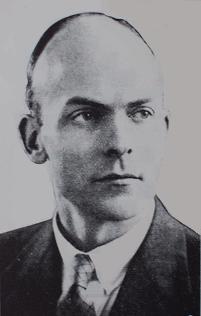William Fairhurst facts for kids
William Albert Fairhurst (born August 21, 1903 – died March 13, 1982) was an amazing British expert in two very different fields. He was a brilliant bridge designer and also a top-level international chess master. He was so good at both that he managed to have two successful careers at the same time for many years!
William Fairhurst received a special award called a CBE (Commander of the Order of the British Empire) for his great work in engineering. In chess, he won the Scottish championship many times. He also earned the important title of International Master in 1951.
Chess Champion
William Fairhurst was born in Alderley Edge, England. He taught himself to play chess when he was just thirteen years old. He learned from books he found at home. A chess teacher named Siegbert Tarrasch inspired him. This meant William played chess with a very planned and strategic style.
By the time he was eighteen, he was already the chess champion of Cheshire County. Later, he moved to Lancashire and became known as one of the best players in Northern England.
Even though he was an amateur (meaning he didn't play chess professionally), he did well in big tournaments. In 1927, he played in a tournament in Scarborough. He came in second place, beating some famous masters like Efim Bogoljubov. He even defeated the winner of that tournament, Edgard Colle. When he was in his twenties, he also helped edit a popular chess magazine called Chess Amateur.
Scottish Chess Success
In 1931, William Fairhurst moved to Scotland. He helped make chess very popular there. He won the Scottish Chess Championship a record eleven times between 1932 and 1962.
He was also very good at blindfold chess. This is when a player plays without looking at the board! In 1932, he played twelve games at once while blindfolded. He won nine games and drew three. A year later, he played a six-game match against Erich Eliskases, a strong player from Austria. The match ended in a draw. In 1937, Fairhurst won the tough British Chess Championship in Blackpool.
William Fairhurst often played for Great Britain in team chess matches. He played against countries like Czechoslovakia, the Netherlands, and Russia. He led the Scottish Chess Olympiad team six times between 1933 and 1968. He even beat Bent Larsen, a Danish champion who later became a world championship challenger.
In 1947, he played in a chess match over the radio against Australia. Later that year, he finished fifth at the Hastings International Chess Congress. He did well again at Hastings in 1948/49, tying for fourth place.
Commonwealth Champion
In 1950, many top chess players from England, Scotland, Canada, New Zealand, and South Africa were all in Britain. So, they decided to hold the first unofficial Commonwealth Chess Championship in Oxford. William Fairhurst won this event! He beat strong players like Daniel Yanofsky and Robert Wade.
As he got older, William Fairhurst continued to support Scottish Chess. He became President of the Scottish Chess Association (SCA) in 1956. He helped the SCA work better with the British Chess Federation. For a while, his leadership was very helpful. However, later on, some people felt he had too much control. After a disagreement about choosing players for the 1968 Chess Olympiad, he stepped down from his role.
Around 1970, his business interests led him to move to New Zealand. He played in the New Zealand Chess Championship there. He liked New Zealand so much that he decided to retire there. In 1974, when he was seventy years old, he played for New Zealand at the 21st Chess Olympiad in Nice. Playing against top international players, he still managed to score well, which was amazing for his age!
Bridge Builder
William Fairhurst built a great career in civil and structural engineering. He became the main partner in his own engineering company, called W. A. Fairhurst and Partners. His company specialized in designing bridges.
His biggest and most famous project was designing the new Tay Road Bridge. This bridge crosses the Tay estuary and connects Fife with the city of Dundee in Scotland. When it was built, it was the longest river crossing in Europe, stretching about 1.4 miles (2.25 kilometers). The bridge cost £6 million and was opened in 1966 by the Queen Mother.
Other important bridges he designed include the Kingston Bridge, Glasgow (opened in 1970) and the Queen Elizabeth II Metro Bridge (opened in 1980) in Newcastle-upon-Tyne. He also designed many other bridges in Scotland and New Zealand. He was asked to help with a difficult bridge project in New Zealand in the early 1970s, which is how he ended up making his retirement home there.
For all his amazing work in engineering, he received a special doctorate degree. He was also given the CBE award by The Queen. At the top of his engineering career, he was honored with the Presidency of the Scottish Branch of the Institution of Structural Engineers. He also wrote a book called Arch Design Simplified. He was a member of the Royal Fine Art Commission for Scotland, which advises on art and architecture.
His engineering company is still very successful today. It has 15 main offices and employs 500 people. It is now one of the biggest private engineering companies in the UK. Since 2012, it has been known simply as Fairhurst.


